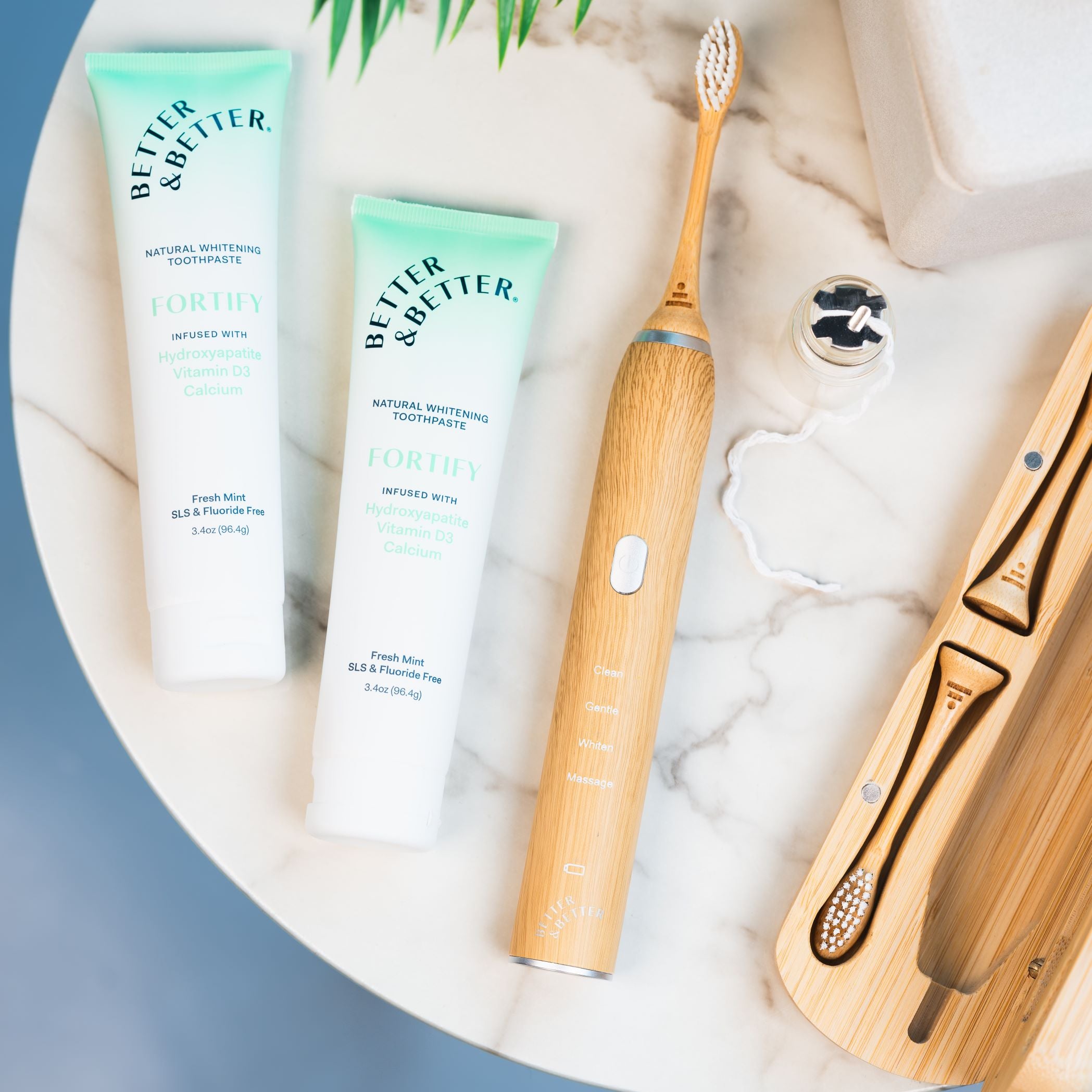The short answer: adults and kids age 6 and older should use a pea-sized amount of toothpaste, while children under age 3 should use a smear the size of a grain of rice.
We’ve all seen the commercials where someone squeezes a long, decadent swoosh of toothpaste along the length of the toothbrush bristles. (Did you know there’s a word for this swoosh? It’s called a “nurdle.”) But is that actually how we’re supposed to do it?
By now we know that we’re supposed to brush our teeth for two minutes twice a day, but the question of how much toothpaste we should be loading onto our brush isn’t as widely agreed upon.
In this article, we’ll establish how much toothpaste you should actually be using—and how much the amount you use actually matters. Here’s a hint: it’s probably less than you think. And it’s different for kids and adults.
Let’s get into the facts.
How Much Toothpaste Should You Use?
Adults and children age 6 and older should use a pea-sized amount of toothpaste—about 0.25 grams.
Most research on toothpaste dosage focuses on the proper toothpaste amount for young children. This is because little ones are at the greatest risk of swallowing toothpaste, and some ingredients in your average toothpaste can be harmful when ingested.
According to the CDC’s official guidelines, young toddlers under age 3 should use a smear the size of a grain of rice. When they reach age 3, they can move on to using a pea-sized amount (.25 g).
While the CDC says that children can start using more than a pea-sized amount from age 6 onward, there’s no specification on exactly how much, or why a larger amount is beneficial.
What Happens If You Use Too Much Toothpaste?
In most cases, using too much toothpaste won’t cause you harm, per se —it’s mostly just not necessary. Using a big glob won’t get your teeth any cleaner than using a pea-sized amount will. Plus, using a large amount means you’ll have to buy toothpaste more often, which will cost you more, and cause more waste.
That said, there are some cases in which too much toothpaste is harmful. In the case of young children, there are two reasons to limit excess toothpaste usage:
Swallowing
The most obvious of these is that some ingredients in big brand toothpastes can be harmful if ingested. By age 6, children develop the swallowing reflex that allows them to avoid ingesting their toothpaste, which is why the CDC says they can use a larger amount from age 6 onwards.
To be on the extra safe side, using a natural toothpaste that’s free from toxins and artificial ingredients can help you feel at ease when your child starts brushing. Included in the list of ingredients you don’t want your child swallowing too much of is fluoride—which leads us to reason #2.
Fluorosis
Dental fluorosis is a cosmetic condition that causes white stains on developing teeth. It occurs when a young person is exposed to too much fluoride while their teeth are forming, which can happen through high fluoride content in tap water, and an overuse of fluoride toothpaste.
Using a toothpaste that contains hydroxyapatite—a naturally occurring cavity-fighter that our bodies already make—is a way to get the same positive effects of fluoride, without worrying about fluorosis.
Additionally, some ingredients in your standard grocery store toothpaste can be irritating to adults too, so it follows that the more of them you brush with, the more irritating they can be. One such common ingredient is SLS (sodium lauryl sulfate), which is known to cause canker sores.
Is Your Oral Care Routine Overdue for an Upgrade?
As with many things in life, it’s all about finding the right balance. Your best bet is to use just enough to make your tooth brushing experience enjoyable and encourage keeping it up for the full two minutes, but not so much that your toothbrush runneth over.
In sum: For kids over 6 and adults, you can’t go wrong with a pea-sized amount.
And don’t forget—the type of toothpaste you use is just as important as how much you use (if not more). The tissues in the mouth are extremely absorbent, especially during active brushing. That means that whatever’s in your toothpaste takes a shortcut right into your bloodstream, as opposed to being broken down by the digestive tract.
All of Better & Better’s toothpastes are made of super safe, food-grade ingredients, and free from harmful abrasives, artificial flavors, colors, and dyes. And yes, it’s even safe enough to swallow—but we don’t recommend it.


















